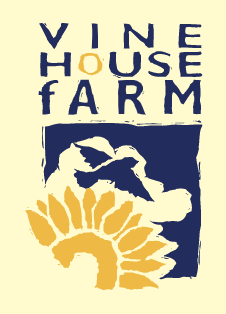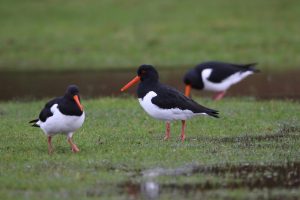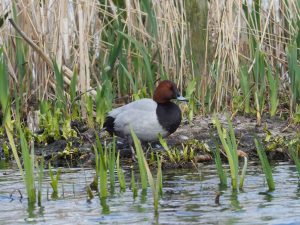
April was a dry month for us here in the East, as we only had 10mm of rain. This isn’t a record as we have had four drier Aprils previously. The driest was in 2011, when we only had 2.5 mm, and the month before, March 2011, we only had 3.9mm. 2011 was the driest year I have recorded in the last 50 years and it was followed by the wettest year I have recorded. We have also had a lot of sunshine which has dried the ground out and if we drill any of the bird seed crops they wouldn’t grow because we cannot put the seed in without any moisture. We had a lovely warm Easter making me think that April was warmer than average, but it was about average.

This Spring has been the opposite to last Spring here in the East, we have had so many dry days, all our sugar beet was drilled in March, all the potatoes were planted by 24th April and all were planted in very good conditions.
Normally we would think having the potatoes all planted in good conditions would lead to a surplus of potatoes, but a lot of farmers have been unable to fill their irrigation reservoirs as river levels have been so low, which means they will not have so much water to irrigate their crops. There are reasons that there will be a surplus of potatoes in 2019 and reasons that there will be a shortage, but whatever happens there will never be a shortage in the shops. 10% less yield could lead to a doubling in price. Whatever the weather, we will have to take what comes.
April 2018 was very wet, we hardly sowed or planted anything that month, but, as you know, it was a splendid summer and most of the crops did very well.
As I write this, we are starting to irrigate some Canary seed, which was drilled in mid-April, because it hasn’t started to grow yet. Following that, we will start to irrigate some land that we intend to sow with millet.
Last autumn, and during the winter, we have had a small insect called a flea beetle that has decimated our rape crops. We used to coat the oil seed rape seed with a chemical, the active ingredient was a neonicotinoid. The rape seed is a very small seed and just a dusting of this chemical on the seed protected it all through the plants growing life, from August to June. Unfortunately this chemical affected the homing abilities of honey bees and so it has been withdrawn from the market and it could mean that it will be impossible for us to grow oil seed rape in the future. Obviously some of the chemicals we are using are very powerful, and so they have to be tested rigorously before they are introduced. So rigorously that it would cost in excess of £100 million to introduce a new chemical and when we get to apply one ounce per acre, it would be very difficult to set the correct application rate.
We are still outloading last year’s potato crop from our refrigerated stores. Some of these are on contract with McCains who make McDonald’s French Fries. The remaining potatoes are not on contract and the mild spring has reduced their selling price due to lower demand in shops and supermarkets.


For several years we had about 16 Moorhens which came to winter on a pond near our grain store, here at Vine House Farm. Two years ago there were only 12 and this last winter there were only six that wintered with us. They come here because they find bits of wheat around the grain drier doors.
It would appear to me that they are not rearing enough young to maintain their numbers. We also have a second pair of Moorhens at a pond, near the farm house who only reared two young last summer. They didn’t nest until May because there wasn’t enough cover to hide the nest, and then the eggs disappeared – who took them I don’t know.
Moorhens are not a particular love of mine, but I wouldn’t like to see the species disappear. We built a little hut and put it on a pallet and floated it on the pond, in mid March, and Moorhens were carrying nesting material into the hut ten days later. We quickly built another hut put it on a pallet and floated it on the second pond and Moorhens were also seen carrying nesting material into it ten days later. The pair on the first pond hatched their young around April 22nd as one of the parents was taking food into the hut. April 26th was a nice day, and four chicks were seen on the pond with their parents.
Winter returned on April 27th with gale force winds and it was bitterly cold. The chicks were in the hut all day long being fed by their parents with food from the pond and from our feeding station. Haven’t those chicks had a good start in life! I wonder how many Moorhens we will have wintering during the coming winter?
What did the birds do? They had to eat more to keep warm and if they were feeding young the young would also need more food. Meanwhile the insects went into hiding as it was too cold, I certainly didn’t see any bees or butterflies that day. Those are the sort of days when young birds die in the nest through starvation, but that needn’t happen in your garden because you could have been feeding live mealworms, let’s hope you were. RSPB studies have shown that you will rear 50% more birds in your garden if you feed live mealworms. If we want to see a lot of birds, we will have to rear a lot of birds.
Every suitable morning at this time of year I go around our farms with binoculars and notepad recording what we have on the farms. This morning, by the river Welland, I heard Cettis, Grasshopper, Reed and Sedge Warblers, Blackcap and Whitethroat, as well as Yellow Wagtails, Reed Buntings and Grey Partridge. I thought I had a good morning and I was back in the yard to set the men on by 7am.
We have had up to 200 Fieldfares feeding. They are on a field that had been direct drilled with oil radish and will be direct drilled with millet. Direct drilled means being drilled without cultivating. The Fieldfares stayed with us while the wind was north easterly, then when the wind changed to southerly on April 25th, they all disappeared and I expect they are all in Scandinavia now. You don’t go flying across the North Sea when there is a headwind. It was only a 15 acre field and there were also five pairs of Lapwings on that field. I am sure the Lapwings were pleased to see them go, as they were eating food the Lapwing chicks need.
The farm walk season is upon us, the first one on May 18th. You will be able to see and hear a few of the things I talk about in my newsletters. If you belong to a group or society, you can also book your own private tour.
TALKS & EVENTS
18th & 19th May: Pensthorpe Bird & Wildlife Fair
We have the following Farm Walks this year:
18th May & 15th June: See & hear birds around the farm
6th July: See our wildflower meadows
3rd, 10th & 11th August: includes the sunflower fields



